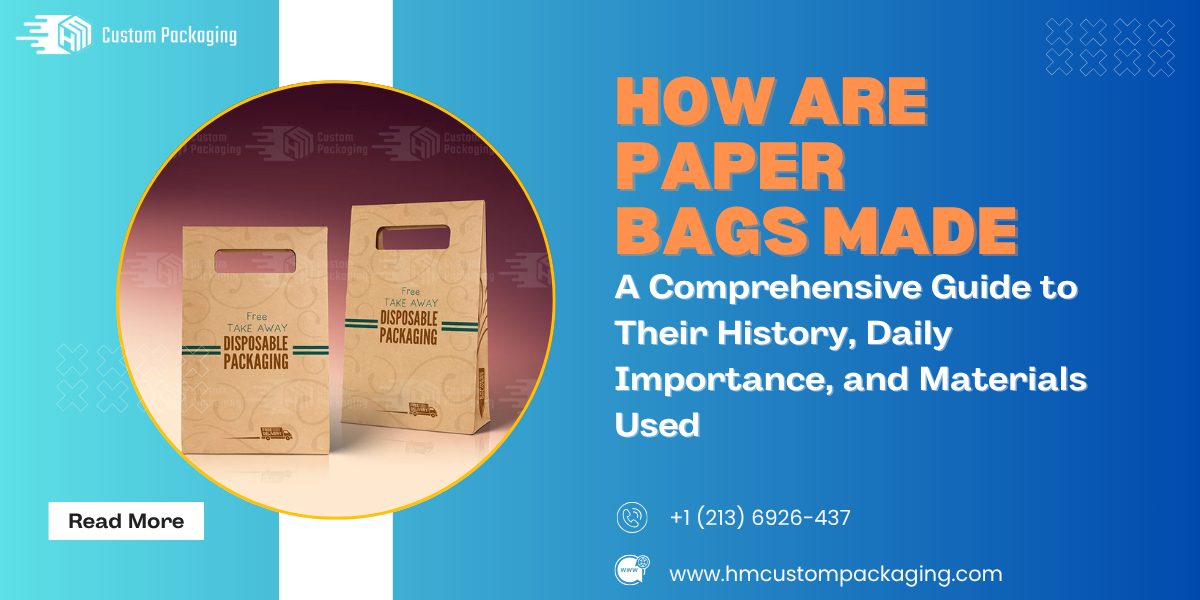
How Are Paper Bags Made: A Comprehensive Guide
In a world shifting towards sustainability, paper bags have re-emerged as practical and eco-conscious packaging solutions. Understanding the making of paper bags helps us appreciate not just their functionality but also their environmental value. From raw materials to the final fold, this guide explores every step of how these everyday essentials are created and why they matter more than ever.
What Are Paper Bags?
Before we get into production, let’s define the product. A paper bag is a container made from paper, designed to carry lightweight to medium-weight items such as groceries, retail products, or food. The function of paper bags is to offer a biodegradable, recyclable, and renewable alternative to plastic bags while maintaining strength and usability. Their flexibility, printability, and ease of disposal make them ideal for both commercial and personal use.
A Brief History of the Paper Bag
To understand where does a paper bag come from, we look back to 1852 when Francis Wolle, an American inventor, developed the first machine to mass-produce paper bags. Over time, designs evolved introducing flat bottoms and twisted handles, increasing both strength and functionality. Their popularity surged during plastic bans and the rise of green movements, making them relevant once again.
Importance of Paper Bags in Daily Life
In our daily routines, paper bags serve multiple roles. They are commonly used in grocery stores, takeout services, retail shops, and even as compostable liners in some kitchens. The paper bag function is deeply integrated into sustainable living. Unlike plastics, which can take hundreds of years to degrade, brown color paper bags are biodegradable and less harmful to ecosystems.
The Journey of Paper Bags and Their Modern Importance
Initially developed for utility, the function of paper bags today extends beyond packaging. They symbolize eco-awareness, brand responsibility, and consumer choice. Many businesses now choose paper bags not just for function, but for the message they send responsibility, quality, and care for the environment. Their importance in modern society aligns with global efforts to reduce plastic consumption and support circular economies.
Raw Materials Used in Paper Bag Production
What are paper bags made of? The core material is kraft paper, typically derived from softwood trees like pine and spruce. These trees provide long fibers that increase tear resistance and durability. For premium bags, hardwood pulp may be added to improve print quality and texture. All materials used are biodegradable and come from renewable forestry operations.
Types of Paper and Their Properties
Different grades of paper are used depending on the bag’s purpose:
- Kraft Paper: Strong, tear-resistant, and ideal for brown color paper bag designs.
- Bleached Kraft: White in color and often used for printed or branded bags.
- Recycled Paper: Environmentally friendly, though slightly less durable.
The properties of a paper bag such as thickness (measured in GSM), fiber length, and surface texture affect its strength, appearance, and usability.
Additives and Coatings in Paper Bags
To enhance durability and usability, paper bags may include additives or coatings:
- Water-resistant coatings to withstand moisture
- Food-safe linings for direct contact with edibles
- Varnishes or laminates to improve appearance and print adhesion
However, most manufacturers aim to keep coatings minimal to ensure recyclability and biodegradability.
The Manufacturing Process of Paper Bags
Here’s a step-by-step look at the bag production process:
- Pulping: Wood chips are turned into pulp using chemical or mechanical processes.
- Sheet Formation: The pulp is pressed and dried into rolls of paper.
- Printing: Custom designs or branding are printed onto the paper if needed.
- Cutting and Folding: Machines cut the paper into specific sizes and fold it into shape.
- Bottom Formation: The base is folded and glued to provide support.
- Handle Attachment (if applicable): Twisted or flat handles are added.
- Inspection and Packaging: Finished paper bags are quality-checked and bundled.
Modern equipment ensures fast, efficient, and uniform making of paper bags, producing thousands per hour with minimal waste.
Benefits of Using Paper Bags
There are many advantages to using paper bags:
- Eco-friendly: Made from renewable resources and are biodegradable.
- Recyclable: Easy to recycle and often made from recycled paper.
- Reusable: Strong enough for multiple uses, especially thicker varieties.
- Safe for Wildlife: Decomposes naturally and poses no threat to animals.
- Supports Green Branding: Reflects a company’s commitment to sustainability.
Paper Bags vs. Plastic Bags
When comparing paper bags and plastic bags:
- Paper is biodegradable and easier to recycle but requires more energy to produce.
- Plastic is lightweight and durable but lingers in the environment for centuries.
- Functionally, paper performs well for dry goods and branding, while plastic excels in moisture resistance.
For conscious consumers and eco-aware brands, paper bags clearly offer the more responsible choice.
Conclusion
The making of paper bags is a well-structured, environmentally guided process rooted in innovation and responsibility. Understanding what are paper bags made of and the properties of a paper bag empowers us to make better decisions for our homes, businesses, and planet. With their rich history and continued importance, paper bags remain a simple yet powerful tool in the shift toward sustainability.
Let me know if you’d like this blog formatted for WordPress or with meta tags and images included.

